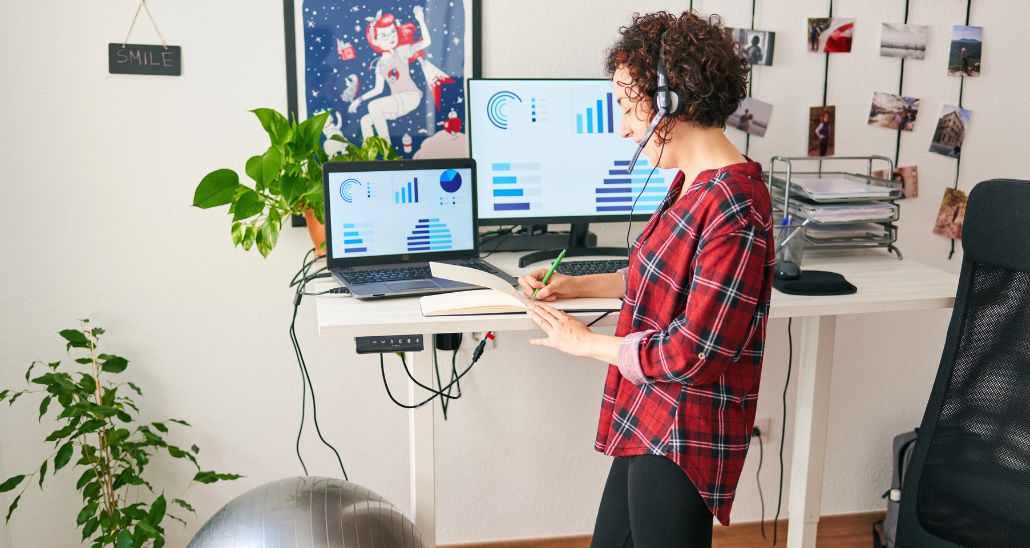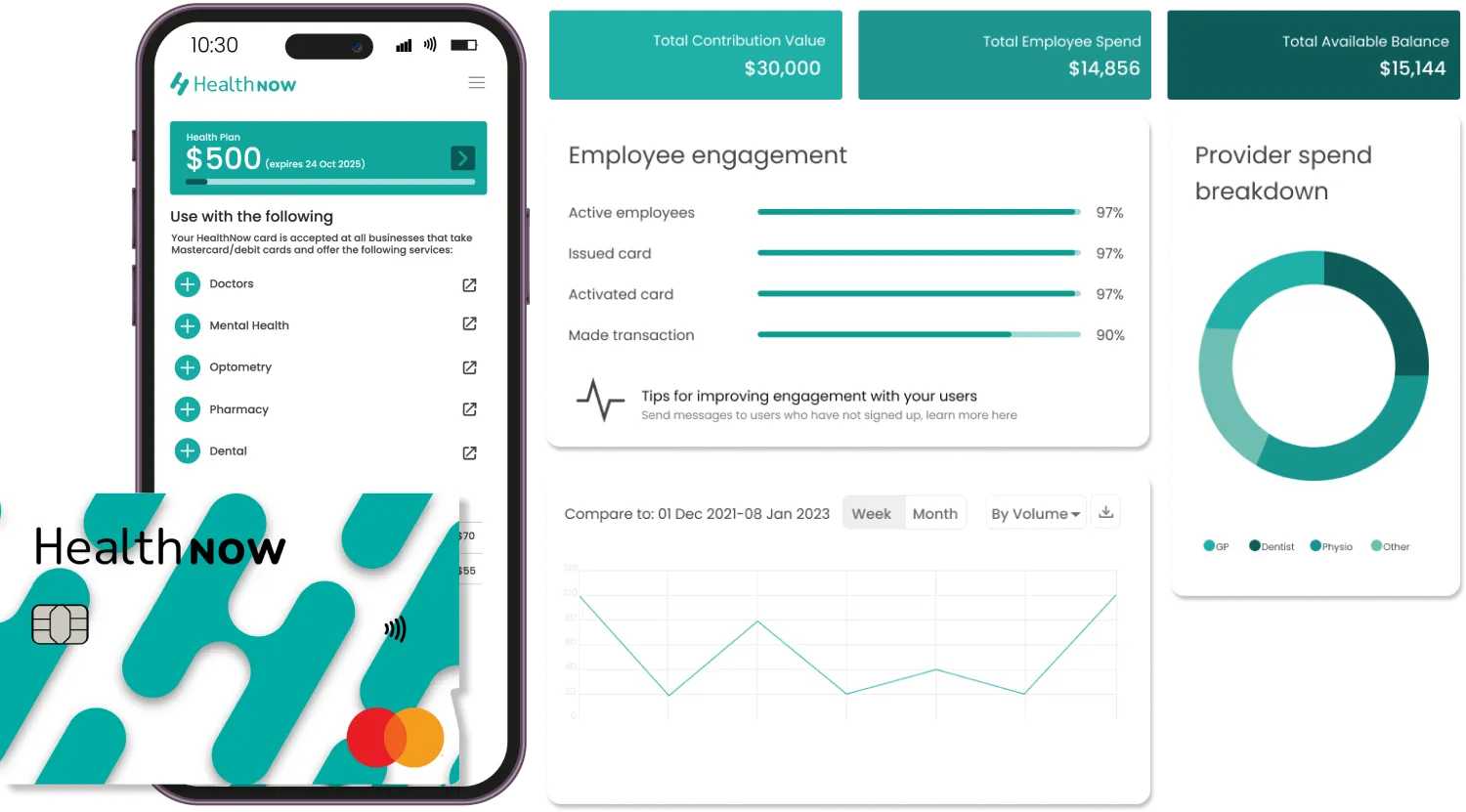Our body is designed to support natural movement, with our musculoskeletal system working in complex and magnificent ways to keep us moving efficiently and painlessly as we stand, walk, kneel, lie down and sit. Unfortunately in current times, many of us are now sitting at computers to work, and even more sitting for our leisure time at home looking at screens. The reality is that all of this sitting is taking a toll on our health, and in particular, contributing significantly to the development of lower back pain, with 7.5% of us struggling with lower back pain at any one time.
Let’s take a look at the relationship between how much you sit down and your back health from a physiotherapist’s perspective, and share why it’s essential to find ways to get out of your chair regularly to prevent lower back pain from developing, and protect your ability to be work, be active, and do the things you love.
Our Bodies Weren’t Designed For Sitting
Historically, humans used to be a lot more active throughout their days than they are now – even while at work. Now, with the move towards the online world of devices, the number of sedentary jobs has risen by 83% since 1950, and almost half of us spend around 6.3 hours of our working day sitting down.
When we sit down, our muscles, bones and joints, including the spine, can compress from pressure in an unnatural way. Your spine is your body’s central support structure, providing you with much-needed mobility while remaining rigid enough to support the weight of your body. By design, the spine relies on your regular movements to keep itself healthy and flexible.
Sitting for prolonged periods of time, like at our desk at work, increases the stress and strain on our back muscles and spine. And if we slouch forwards towards our screen, we can almost double the stress placed on our spine compared to standing.
What Can Sitting For Long Periods Do To My Posture?
Sitting in one position for most of the day with hardly any movement breaks has been shown to reduce the blood flow to our brains which can leave us feeling tired and less alert. It can take as little as 15-20 minutes of uninterrupted sitting for our brain to start sending messages to our body to rest, which can make it harder for us to focus and encourage us to sit with a slumped posture. When these messages are being sent regularly throughout the day, our posture continues to worsen, and this is often another significant contributor to troublesome lower back pain.
Can Muscle Strength Decrease With Prolonged Sitting Too?
When we sit for long periods and don’t actively use our muscles, or only use our muscle strength outside of work hours, our muscles can start to lose their strength and mass, and our backs can become more and more stiff over time. This means that we can often end up moving less freely, with restricted movement patterns that don’t allow our muscles to support and stabilise our backs as well as they should, which can make us even more vulnerable to low back pain.
Am I Sitting For Too Long?
Research has found that sitting for longer than four hours each day significantly increases your chance of heart disease, diabetes and several other obesity-related conditions. For those who spend most of their work days at a desk, experts recommend using sit-stand desks, or taking short light walks for a minimum of two hours per day during your working hours, even if this is spread out in short bursts.
How Can I Minimise Back Pain and Stiffness When Sitting?
When it comes to supporting your body and lower back when sitting, there are three key ingredients:
-
Sit for shorter periods
Sitting for extended periods is less harmful when broken up by activities like short walking breaks. Some practical strategies while at work could include:
- Standing up at the end of each phone call, or after completing a task
- Walking to a colleague instead of emailing them
- Listening to your body, and standing up when you feel tired or uncomfortable
- Using glasses to drink water and walking to fill up the glass more regularly
- Optimising your work environment – use the stairs more frequently, and use a printer or toilet that’s further away from your desk
- Use a timer or alarm to remind you to stand at regular intervals
-
Exercise to strengthen key muscles
Strengthening and stretching your leg and torso these muscles will help you to sit in a correct posture for longer, and can slow the development of pain. Pilates is a great exercise for this, as it helps to increase muscle strength, endurance, flexibility, improve posture and balance, and has been shown to be effective in reducing low back pain.
-
Seek Support From A Qualified Physiotherapist
Once pain develops, it is important to get help to relieve the symptoms and protect against long term injury with physiotherapy. Physiotherapists work by completing a comprehensive assessment that identifies the barriers to your recovery from lower back pain. This includes assessing your strength, posture, muscle imbalances and dysfunctions, and the influences of other areas of your body. Your physio will then create an individualised treatment plan to help address your symptoms in the short term, as well as the long-term – reducing your risk of worsening or redeveloping symptoms in the future.
Ready To Get Targeted Support From A Physiotherapist But Can’t Manage The Full Cost?
While everyone in New Zealand deserves the right to be pain-free and mobile, paying for an appointment with a physiotherapist can put people off from seeking the treatment they need, especially if they don’t have the money available in their bank account straight away. Delaying care leaves your body vulnerable to the issues becoming worse, which can affect your ability to go to work and live life to the full.
This is where New Zealand’s leading health-focused Buy Now, Pay Later (BNPL) platform, HealthNow, has stepped in to bridge this gap at no cost to health consumers. Used as an app on your smartphone, your total appointment cost is split over up to six weeks, leaving your upfront cost at only a fraction of what it would otherwise be.
Unlike other BNPL services that charge fees or interest, which further disadvantages those that are in pain and are trying to be proactive about their health, HealthNow remains completely free to users, and physiotherapy clinics still get paid in full by HealthNow on the day of the visit. This win-win platform is transforming healthcare access for New Zealanders, enabling them to get the best outcomes for their health by not being forced to delay their care.
To start using HealthNow and claim your $10 credit when you first create an account to use on any health service, sign up here. You can also check out HealthNow’s full benefits and features, including a health wallet to store funds set aside for health services that can be contributed to by others including your employer.
References:
- https://pubmed.ncbi.nlm.nih.gov/26311951/
- https://pubmed.ncbi.nlm.nih.gov/21647427/
- https://pubmed.ncbi.nlm.nih.gov/22227284/
- https://www.uclahealth.org/spinecenter/ergonomics-prolonged-sitting
- https://ergo.human.cornell.edu/DEA3250Flipbook/DEA3250notes/sitting
- https://journals.physiology.org/doi/full/10.1152/japplphysiol.00310.2018
- https://www.ncbi.nlm.nih.gov/pmc/articles/PMC7822118/
- https://pubmed.ncbi.nlm.nih.gov/31514046/
- https://journals.lww.com/acsm-essr/Fulltext/2010/07000/Too_Much_Sitting__The_Population_Health_Science_of.3.aspx
- https://www.researchgate.net/publication/283847435_The_sedentary_office_An_expert_statement_on_the_growing_case_for_change_towards_better_health_and_productivity
- https://journals.physiology.org/doi/full/10.1152/japplphysiol.00310.2018
- https://www.ncbi.nlm.nih.gov/pmc/articles/PMC6110226/
- https://pubmed.ncbi.nlm.nih.gov/23738249/
- https://pubmed.ncbi.nlm.nih.gov/26133923/








